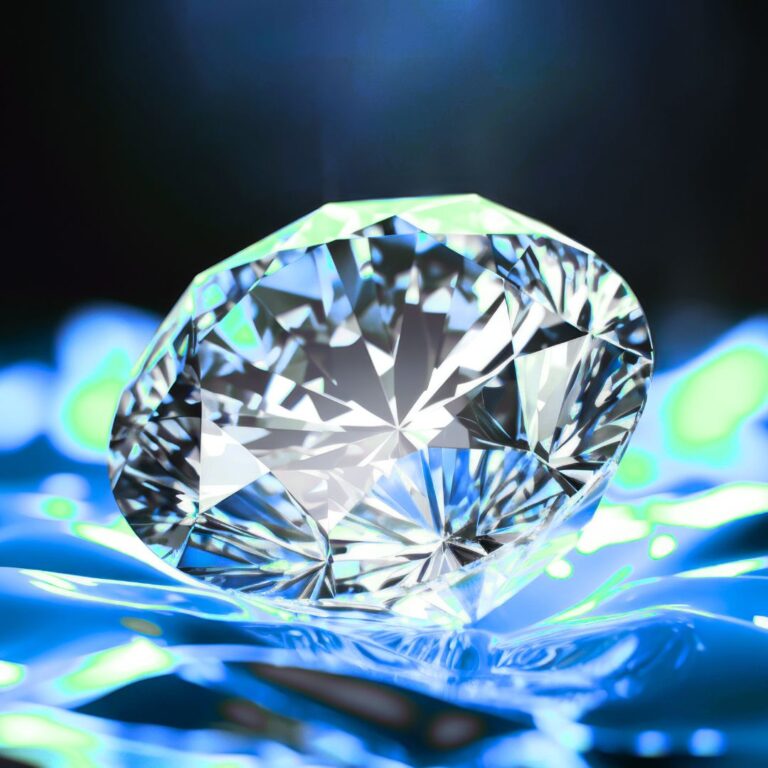For decades, diamonds have dazzled the world—not just in jewelry stores but in the minds of consumers. We’ve been taught that diamonds are rare, valuable, and eternal symbols of love. But beneath the sparkle lies a harsh truth: diamonds are not forever—at least not when it comes to their value as an investment.
In fact, the resale value drops sharply the moment you walk out of the store. Despite what clever marketing might suggest, diamonds are not smart investments. Here’s why.
A Short History of a Brilliant Lie
The diamond’s place in culture and commerce wasn’t built on rarity or utility—it was built on marketing. In the 1930s, diamond giant De Beers launched one of the most successful advertising campaigns in history. Their slogan, “A diamond is forever,” transformed a relatively common gemstone into a global symbol of eternal love.
Before that campaign, diamonds weren’t even the default stone for engagement rings. But De Beers limited supply, controlled prices, and flooded media with the idea that love without a diamond was incomplete. The market perception was entirely manufactured.
The Real Value of Diamonds (and Why It Doesn’t Hold)
Let’s talk numbers.
- Retail markup: When you buy a diamond from a jewelry store, you’re not just paying for the stone. You’re paying for brand, marketing, and hefty margins. This markup can range from 50% to over 200%.
- Resale value: Try to resell that same diamond? Most jewelers won’t even consider buying it back. If they do, it’s often for 20% to 40% of what you paid—sometimes even less.
- Auction prices: Even auction houses are cautious. Only extremely rare or unique stones hold value, and most don’t meet those standards.
In comparison, gold and silver—other precious materials—are traded with more transparent pricing, have clearer global demand, and are often easier to liquidate without such massive losses.
Supply Is Not the Problem
Contrary to what many believe, they are not rare. There’s a steady and significant supply in the world, thanks in part to:
- New mining operations in Russia, Canada, and Africa
- The rise of lab-grown diamonds, which are chemically and visually identical to mined ones
- Stockpiling by companies like De Beers, which artificially constrains market availability
This illusion of scarcity has inflated prices for decades. But now, with artificial becoming mainstream, the façade is crumbling.

The Rise of Lab-Grown Diamonds
Lab-grown are not fakes. They are real diamonds, created through high-pressure, high-temperature (HPHT) or chemical vapor deposition (CVD) methods. What’s changed?
- Price: Lab-grown cost 30% to 70% less than mined diamonds.
- Environmental impact: They’re marketed as more sustainable, though this can depend on the energy source used.
- Resale: Like mined diamonds, lab-grown have poor resale value—but at least the initial cost is significantly lower.
As more consumers choose lab-grown stones, demand for natural diamonds is softening, which could further push down resale prices for mined stones.
How it Compares to Other Assets
Still thinking diamonds might be a good store of value? Let’s compare:
| Asset Type | Liquidity | Price Transparency | Historical Appreciation | Volatility |
|---|---|---|---|---|
| Diamonds | Low | Low | Poor | High |
| Gold | High | High | Moderate | Moderate |
| Stocks | High | High | Strong (long-term) | High |
| Real Estate | Medium | Medium | Strong | Medium |
| Cryptocurrency | High | High | Very Strong (volatile) | Very High |
Diamonds consistently underperform in every category when viewed as an investment. They are difficult to sell, pricing is subjective, and there is no organized market that ensures fair pricing.
What People Don’t Realize Until It’s Too Late
Many buyers only learn the truth when they try to sell. Stories abound:
- A woman in California tried to sell her $10,000 engagement ring and was offered just $1,200.
- A man in Singapore bought a pendant for $6,000 and was shocked when multiple jewelers refused to buy it back at all.
- Reddit forums and online blogs are filled with regretful buyers sharing their frustrations over the harsh reality of depreciation.
Even certified diamonds with grading reports from GIA or IGI don’t guarantee favorable resale.
The Sentimental Trap
Why do people still buy? Because most aren’t thinking like investors. They’re thinking emotionally. Jewelry, especially for engagements, is about meaning, not market value. And that’s okay—as long as you understand what you’re paying for. Diamonds can be beautiful gifts, personal symbols, or family heirlooms. But calling them an investment? That’s just not accurate.
Final Thoughts: A Rock-Solid Illusion
For all their sparkle and status, diamonds lose their financial shine the moment they leave the jewelry case. Their value is upheld by perception, not performance. And as lab-grown options become more accepted, the resale value of mined diamonds could sink even further.
So before you drop thousands on something you think you can resell later, ask yourself: would you pay the same amount for a car that loses 60% of its value overnight?
Diamonds are not forever. At least not in your wallet.
Sources:
For more tips on which to invest on, click here!






